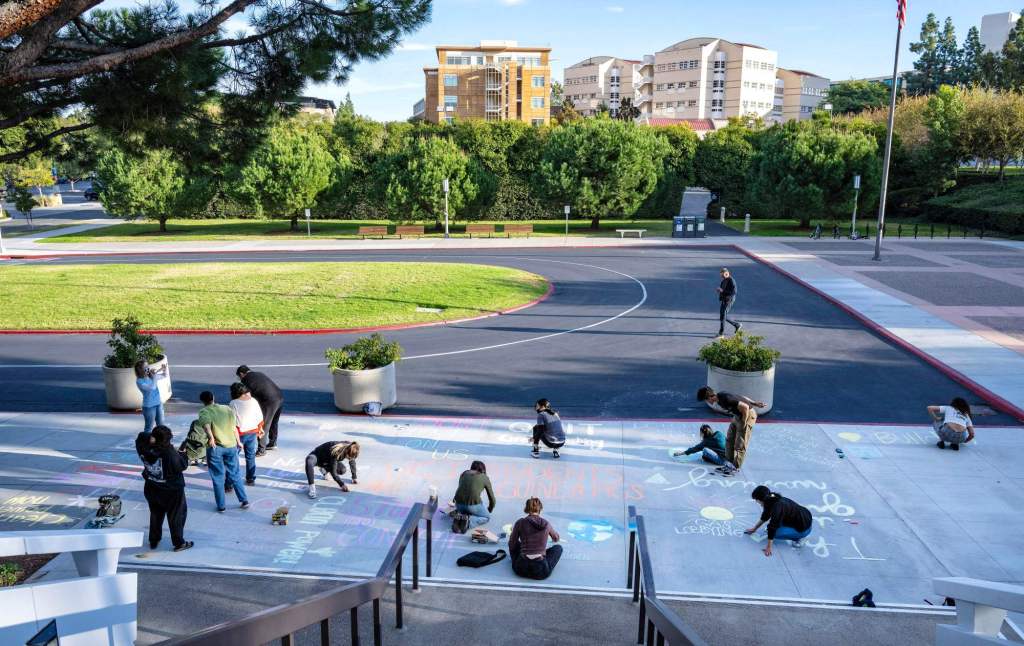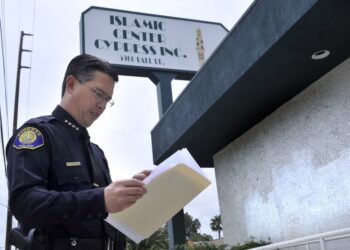Nearly 15 months after protestors chalked “students aren’t lab rats” and similar messages on a UC Irvine sidewalk, Southern California Gas Co. has scaled back and revised plans for a test that would have used hydrogen to replace up to 20% of the natural gas now running through the university’s pipelines.
SoCalGas first asked state regulators in fall of 2022 for permission to use electricity from the state’s grid to make a lower-carbon fuel blend that included hydrogen and to pipe that new blend into university dorms, offices and restaurants. But that plan sparked pushback from student, faculty and environmental groups, and on March 1 the investor-owned utility changed its request, asking for permission to use solar power to make hydrogen that would be tested in a closed system and only at UC Irvine’s Anteater Recreation Center.
The utility also asked to move a portion of the testing to a new location.
Now, if the Public Utilities Commission approves the amended application from SoCalGas, the first hydrogen testing in an open system in California could be centered on homes and businesses in Orange Cove — a small, low-income and largely Latino citrus farming town near Fresno.
The tests are supposed to demonstrate how gas pipelines and the appliances (such as ovens and furnaces) they fuel will hold up once different amounts of hydrogen are introduced to the system.
Displacing any amount of natural gas in our statewide energy portfolio could help with climate change, since burning hydrogen doesn’t emit the same planet-warming carbon dioxide as burning natural gas, which is up to 90% methane. That’s why hydrogen has become a key focus in recent years for some researchers and regulators seeking cleaner substitutes for fossil fuels, with the gas included in decarbonization plans from multiple state and federal agencies.
But hydrogen also can make pipelines get brittle and potentially fail faster than systems carrying natural gas alone. And most…
Read the full article here







